#GameEngine
Explore tagged Tumblr posts
Text
Psx indie games in CRT
I turned this broken PS1 into a retro mini PC for fun some time ago. It worked perfectly for playing the Twin Peaks demo by blueroseteamtp on a CRT. I really recommend it; the demo is excellent and is free in itchiogames . If you want the code or the 3D pieces, let me know. The ghostly Laura Palmer figurine from season 3 was made by kuato_toys
#arcade#arcadegame#retro#retrogaming#twinpeaks#twinpeaksgirls#davidlynch#lynch#psx#ps1#ps1games#hobby#playstation#play#crt#crtTV#crttvs#diy#diyproject#gamedev#gaming#gamingontiktok#gamingsetup#gamingvideos#unity#unity3d#gameengine#godot#godotengine#raspberrypi
7 notes
·
View notes
Text
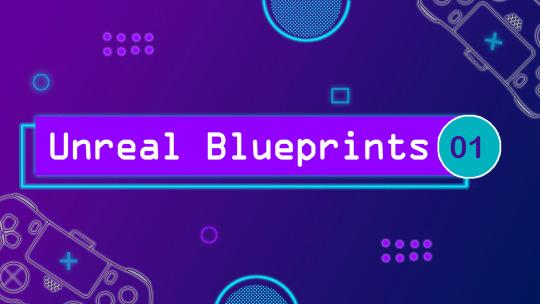
Unreal Blueprints For Absolute Beginners 01
Unreal Blueprints For Absolute Beginners 01 ► https://youtu.be/xBfeV2rBbwE?si=qFCSScpyrEjal_Ef ► Learn what Blueprints are, explore their types, understand Level Blueprints, and dive into Blueprint Classes and Instances in this beginner-friendly Unreal Engine 5 live class. Perfect for aspiring game developers starting with UE5.
Unreal Blueprint Live Classes: ► https://www.youtube.com/playlist?list=PL5J6BosD220B6c2oMJMkjtNPoKG-1RZT8
#UnrealBlueprints#UnrealEngine#Unreal#GameDesign#GameDevelopment#GameEngine#Gaming#GameDesigner#GameDeveloper#GameDev#IndieDev
2 notes
·
View notes
Text
The Power of Unity: Create, Design, and Launch Your Game
Unity is one of the most popular game development platforms worldwide, empowering developers to transform their ideas into engaging, playable experiences. Whether you're a beginner or a professional, Unity’s versatile tools and extensive features make creating stunning 2D and 3D games easier than ever.
Create: Turn Ideas into Reality
Unity’s intuitive interface and powerful scripting with C# enable developers to quickly build game mechanics and interactive features. With a vast Asset Store offering ready-made models and effects, you can accelerate your development process and focus more on creativity.

Design: Craft Immersive Worlds
From realistic lighting to physics-driven animations, Unity provides tools to design captivating environments that pull players into your game. It also supports VR and AR development, expanding the horizons for immersive storytelling and gameplay.
Launch: Reach Players Everywhere
Unity’s multi-platform support lets you publish your game across PC, consoles, mobile devices, and more with ease. This flexibility helps maximize your game’s audience and impact, while built-in analytics help you improve player experience after launch.
🌐 https://mr3d.store/ | 📞 +44 7463 151997 — Where imagination meets innovation.
#Unity#GameDevelopment#IndieGame#3DGameDesign#GameDesign#Unity3D#GameDev#VRDevelopment#ARGame#GameProgramming#MobileGame#GameCreator#VirtualReality#AugmentedReality#UnityAssets#GameEngine#GameCoding#GamingCommunity#MadeWithUnity#UnityTips
0 notes
Text
The Game Circuit Nexus: Redefining Play, Powering Creativity, and Shaping Tomorrow’s Gaming Universe
The gaming industry is evolving at lightning speed, and Game Circuit stands at the heart of that revolution. Whether you're a passionate gamer, a rising developer, or a digital storyteller, Game Circuit is your gateway to designing, developing, and dominating the future of interactive entertainment. It’s more than just a platform—it’s a movement dedicated to creativity, community, and cutting-edge innovation.
Empowering Game Creators at Every Level :
Game Circuit is built for creators—from beginners to seasoned pros. With intuitive tools, 3D modeling support, and cross-platform development features, anyone can turn their ideas into powerful, playable realities. The platform offers educational resources, templates, and real-time collaboration features that remove barriers and ignite innovation.

A Community That Builds Together :
At its core, Game Circuit thrives on community. Developers, designers, and gamers collaborate in forums, contests, and mentorship programs that spark creativity and growth. It’s a safe, inclusive space for sharing ideas, getting feedback, and pushing boundaries—together.
Shaping the Future with Technology :
Game Circuit isn’t just keeping pace with the future—it’s leading it. With integrations for VR, AR, blockchain, and AI, the platform enables creators to build next-generation gaming experiences. It supports ethical gaming, social impact storytelling, and limitless innovation that stretches beyond the screen.
🌐 www.gamecircuit.pro | 📞 +447463151997 Play. Create. Dominate
#GamingEducation#LearnGameDev#SupportIndieGames#GamersUnite#CollabAndCreate#DevSupport#GamingCommunity#GamingTechnology#ImmersiveGaming#PlayToEarn#MetaverseReady#BlockchainGaming#AIInGaming#AugmentedReality#VirtualReality#ARGamin#VRDevelopment#DigitalCreativity#GameEngine#CodeToPlay#GameDevTools#GameDevCommunity#BuildYourGame#GameCreators#IndieDev#GameDevelopment#GameDesign#GamingNexus#GamingRevolutio#FutureOfGaming
0 notes
Text
Raycasting in JS
This article by adafruit links to a github article on gamedesign that is very interesting. https://blog.adafruit.com/2023/10/11/a-raycasting-engine-in-7-easy-steps-graphics-gaming-austinzhenley/ https://github.com/AZHenley/raycasting The code IS in javascript, as a heads-up.
Posted using PostyBirb
0 notes
Text
Village Town Blueline Project: Creating a Retro Castle Game with Blueline GODD #gameengine #bluelineacademy”
0 notes
Text
Unraveling Autodesk Maya: The Ultimate 3D Animation & Modeling Software
youtube
#3d#game#unity#art#unity3d#video games#gameengine#street fighter#render#youtube#maya#3d animation#animation#anime art#anime and manga#rendering3d#blender render#octane render#blender#3d art#blender3d#3d model#Youtube
0 notes
Text
Game Development Company | Game Development Platforms | Verve Systems
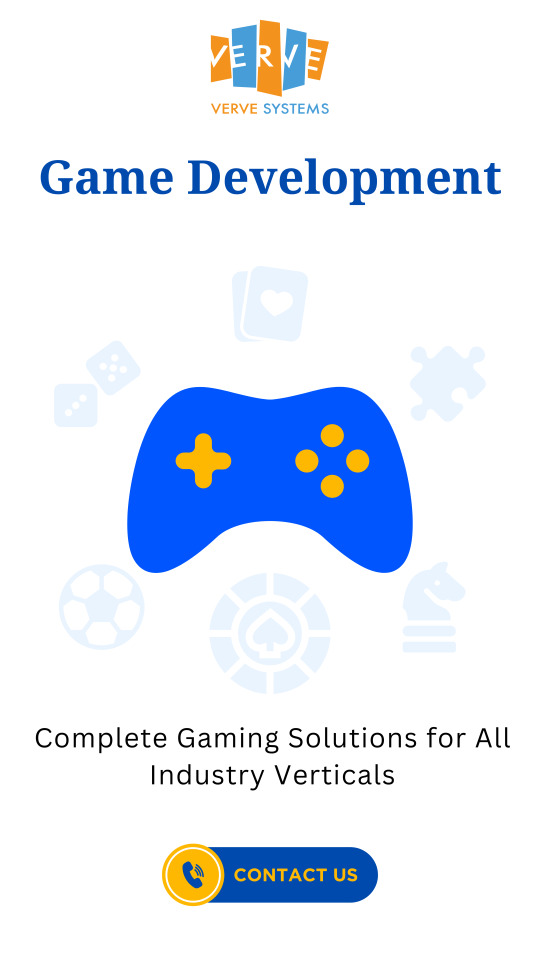
Vervesys providing Mobile Game Development services in flex and flash, windows mobile and PC based 3D game integrated. Contact Us
Explore More - https://www.vervesys.com/services/game-development-testing/ Contact Us - +1 (732) 402-6854, +91 79 4000 7881 Enquire Now - [email protected]
#GameDev#IndieGameDev#GameDesign#VideoGameDev#MobileGameDev#Unity3D#GameDevelopmentTools#GameDevLife#GameArt#GameProgramming#GameDevCommunity#GameDevStudio#GameDevelopmentProcess#GameDevJobs#GameDevelopmentTips#GameDevSkills#GameDevWorld#GameEngine#GameDevWorkshop#GameDevCareer
0 notes
Text
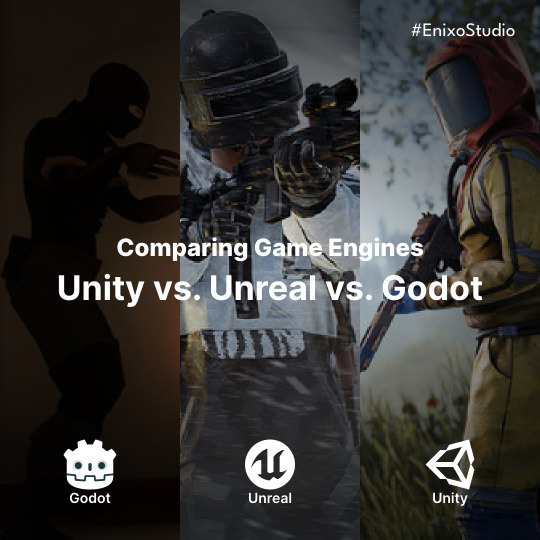
We’re diving into the exciting world of game development and comparing three popular game engines: Unity, Unreal, and Godot! Each engine has its own cool features that make it stand out. Whether you’re a beginner or an experienced developer, there’s something for everyone!
Swipe through our latest post to discover what each engine can do. We want to hear from you— which game engine do you prefer? 🤔✨ Let us know in the comments below!
4 notes
·
View notes
Text
How Cloud Technology is Transforming Game Development
The gaming industry is evolving rapidly, and one of the biggest driving forces behind this transformation is cloud technology. From development pipelines to player experiences, the cloud is reshaping how games are created, distributed, and enjoyed. For studios, embracing cloud-based solutions isn’t just a tech upgrade—it’s a strategic advantage that can boost collaboration, scalability, and innovation. In this article, we explore how game development is being revolutionized by the power of the cloud.

1. Streamlined Collaboration Across Teams
Traditional game development often required large, on-premise hardware setups. Developers had to work within physical studios, syncing assets manually and dealing with file versioning headaches. Cloud technology eliminates these constraints by enabling remote collaboration in real time.
With cloud-based version control, storage, and asset management tools, developers, artists, designers, and QA testers can work together from anywhere in the world. Studios can tap into global talent without worrying about infrastructure limitations.
Example tools: Perforce Helix Core Cloud, GitHub, Unity Collaborate, AWS Cloud9
2. Cloud-Based Game Engines and Development Platforms
Many game engines and development tools now offer cloud-hosted services, reducing the need for powerful local machines. Developers can render complex scenes, simulate physics, or compile large projects on cloud servers, drastically speeding up workflows.
Cloud rendering also enables indie developers and small teams to access high-performance tools that were once exclusive to AAA studios.
Example platforms: Unreal Engine Pixel Streaming, Unity Cloud Build, Amazon Lumberyard
3. Global Game Testing and Deployment
Testing a game across multiple regions, devices, and connection types is critical for launch success. Cloud technology allows developers to simulate different environments without setting up physical test labs.
Cloud-based testing platforms automate QA processes, monitor gameplay analytics, and provide instant feedback. Additionally, deploying updates or patches via cloud infrastructure ensures faster rollouts to global player bases.
Benefits:
Faster bug detection
Reduced server downtime
Scalable deployments across platforms
4. Enabling Cloud Gaming and Streaming
On the player side, cloud technology powers the rise of cloud gaming—allowing users to stream games without downloading or installing them locally. Services like Xbox Cloud Gaming, NVIDIA GeForce NOW, and Google Stadia demonstrate how the cloud can deliver high-quality gaming on low-spec devices.
For developers, cloud gaming expands audience reach by removing hardware barriers. Games optimized for cloud streaming can reach casual players who wouldn’t invest in consoles or gaming PCs.
Impact on game development:
Focus on network optimization
UI/UX tailored for various screen sizes
Cross-platform accessibility
5. Scalable Multiplayer and Live Service Infrastructure
Multiplayer gaming relies on servers that can handle dynamic player loads. Cloud infrastructure offers elastic scaling—automatically allocating resources during peak hours and scaling down during off-peak times.
For live service games, cloud technology enables real-time updates, events, leaderboards, and matchmaking without disrupting gameplay. Developers can also leverage data analytics from cloud platforms to fine-tune balance, track engagement, and personalize player experiences.
Popular solutions: Google Cloud for Games, Azure PlayFab, Amazon GameLift
6. Lowering Barriers for Indie Developers
Perhaps one of the most exciting impacts of cloud technology is how it democratizes, Small studios and solo developers can now access enterprise-level tools, storage, and distribution channels without upfront hardware investments.
Cloud-based marketplaces, app stores, and digital distribution platforms make it easier for indie games to launch worldwide with minimal infrastructure costs.
The Future of Cloud in Game Development
Cloud technology isn’t just a support system—it’s becoming the backbone of modern game development. As 5G networks expand and cloud computing grows more powerful, expect deeper integration of cloud AI, machine learning-driven game testing, and even AI-generated content in future games.
For developers, adopting cloud solutions means greater flexibility, scalability, and creative freedom. The studios that leverage these innovations will be best positioned to lead in an increasingly competitive industry.
#GameDevelopment#CloudGaming#CloudTechnology#GameDevTools#MultiplayerGames#GameDevInnovation#GameEngines#GameStreaming#IndieDev#FutureOfGaming
1 note
·
View note
Text
Choosing the Right Game Engine for Your iPhone Game: A Simple Guide
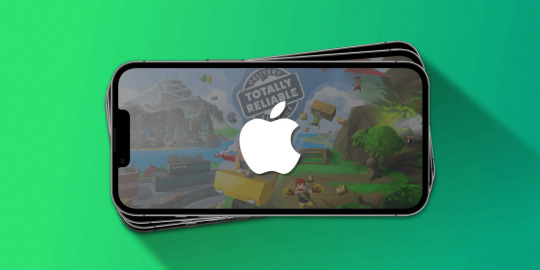
Introduction
Developing a game for iOS is an exciting journey, but one of the most crucial decisions you’ll make is selecting the right game engine. The right choice can significantly impact performance, development time, and overall success. Whether you’re an indie developer or an established iOS game development company, choosing a game engine that aligns with your project’s needs is essential.
Why the Right Game Engine Matters?
A game engine provides the framework for designing, developing, and optimizing games. It handles everything from graphics rendering to physics simulation, making it a critical tool in iOS game development. Selecting the best engine can streamline the process of making an iPhone game, ensuring efficiency and high performance.
Top Game Engines for iPhone Game Development
1. Unity – The Industry Leader
Unity is one of the most popular engines for iOS game development. It offers cross-platform capabilities, a rich asset store, and a user-friendly interface.
Ideal for both 2D and 3D games
C# scripting for smooth performance
Strong community support
Best for beginners and experienced developers alike
2. Unreal Engine – High-End Graphics
Unreal Engine, developed by Epic Games, is known for delivering stunning graphics and realistic physics.
Best for high-quality 3D games
Uses Blueprint visual scripting (no coding required)
Free to use, with royalty-based pricing
Suitable for large-scale projects
3. Godot – Open-Source and Lightweight
Godot is an open-source engine that’s gaining popularity for its flexibility and lightweight nature.
Supports both 2D and 3D game development
Uses GDScript, which is beginner-friendly
No licensing fees, making it cost-effective
Great for indie developers
4. Cocos2d-x – Ideal for 2D Games
If you’re focusing on 2D iOS game development, Cocos2d-x is a strong contender.
Lightweight and optimized for mobile devices
Uses C++, making it highly efficient
Offers a free and open-source model
Great for simple to complex 2D games
Factors to Consider When Choosing an Engine
When selecting a game engine for making an iPhone game, consider the following:
Complexity of the Game: Simple 2D games may work well with Godot or Cocos2d-x, while high-end 3D games are better suited for Unity or Unreal Engine.
Development Experience: If you're a beginner, Unity or Godot may be easier to learn, while Unreal Engine requires more technical knowledge.
Performance and Optimization: Some engines handle mobile performance better than others. Unity and Cocos2d-x are known for optimizing mobile games efficiently.
Cost and Licensing: Free and open-source engines like Godot and Cocos2d-x can save costs, while Unreal Engine has royalty-based pricing.
Conclusion
Selecting the right game engine for your iOS game can make a huge difference in the development process. If you’re new to iOS game development, Unity is a great starting point due to its ease of use and robust features. However, if you’re working on a high-end 3D game, Unreal Engine may be the better choice. Regardless of your choice, ensuring smooth performance and scalability should be your priority.
If you're looking for professional help, an experienced iOS game development company can assist in bringing your vision to life. Whether you’re an indie developer or part of a larger team, understanding the strengths of each engine will help you make an informed decision.
0 notes
Text
#Playstation7 #framework #BasicArchitecture #RawCode #RawScript #Opensource #DigitalConsole
To build a new gaming console’s digital framework from the ground up, you would need to integrate several programming languages and technologies to manage different aspects of the system. Below is an outline of the code and language choices required for various parts of the framework, focusing on languages like C++, Python, JavaScript, CSS, MySQL, and Perl for different functionalities.
1. System Architecture Design (Low-level)
• Language: C/C++, Assembly
• Purpose: To program the low-level system components such as CPU, GPU, and memory management.
• Example Code (C++) – Low-Level Hardware Interaction:
#include <iostream>
int main() {
// Initialize hardware (simplified example)
std::cout << "Initializing CPU...\n";
// Set up memory management
std::cout << "Allocating memory for GPU...\n";
// Example: Allocating memory for gaming graphics
int* graphicsMemory = new int[1024]; // Allocate 1KB for demo purposes
std::cout << "Memory allocated for GPU graphics rendering.\n";
// Simulate starting the game engine
std::cout << "Starting game engine...\n";
delete[] graphicsMemory; // Clean up
return 0;
}
2. Operating System Development
• Languages: C, C++, Python (for utilities)
• Purpose: Developing the kernel and OS for hardware abstraction and user-space processes.
• Kernel Code Example (C) – Implementing a simple syscall:
#include <stdio.h>
#include <unistd.h>
int main() {
// Example of invoking a custom system call
syscall(0); // System call 0 - usually reserved for read in UNIX-like systems
printf("System call executed\n");
return 0;
}
3. Software Development Kit (SDK)
• Languages: C++, Python (for tooling), Vulkan or DirectX (for graphics APIs)
• Purpose: Provide libraries and tools for developers to create games.
• Example SDK Code (Vulkan API with C++):
#include <vulkan/vulkan.h>
VkInstance instance;
void initVulkan() {
VkApplicationInfo appInfo = {};
appInfo.sType = VK_STRUCTURE_TYPE_APPLICATION_INFO;
appInfo.pApplicationName = "GameApp";
appInfo.applicationVersion = VK_MAKE_VERSION(1, 0, 0);
appInfo.pEngineName = "GameEngine";
appInfo.engineVersion = VK_MAKE_VERSION(1, 0, 0);
appInfo.apiVersion = VK_API_VERSION_1_0;
VkInstanceCreateInfo createInfo = {};
createInfo.sType = VK_STRUCTURE_TYPE_INSTANCE_CREATE_INFO;
createInfo.pApplicationInfo = &appInfo;
vkCreateInstance(&createInfo, nullptr, &instance);
std::cout << "Vulkan SDK Initialized\n";
}
4. User Interface (UI) Development
• Languages: JavaScript, HTML, CSS (for UI), Python (backend)
• Purpose: Front-end interface design for the user experience and dashboard.
• Example UI Code (HTML/CSS/JavaScript):
<!DOCTYPE html>
<html>
<head>
<title>Console Dashboard</title>
<style>
body { font-family: Arial, sans-serif; background-color: #282c34; color: white; }
.menu { display: flex; justify-content: center; margin-top: 50px; }
.menu button { padding: 15px 30px; margin: 10px; background-color: #61dafb; border: none; cursor: pointer; }
</style>
</head>
<body>
<div class="menu">
<button onclick="startGame()">Start Game</button>
<button onclick="openStore()">Store</button>
</div>
<script>
function startGame() {
alert("Starting Game...");
}
function openStore() {
alert("Opening Store...");
}
</script>
</body>
</html>
5. Digital Store Integration
• Languages: Python (backend), MySQL (database), JavaScript (frontend)
• Purpose: A backend system for purchasing and managing digital game licenses.
• Example Backend Code (Python with MySQL):
import mysql.connector
def connect_db():
db = mysql.connector.connect(
host="localhost",
user="admin",
password="password",
database="game_store"
)
return db
def fetch_games():
db = connect_db()
cursor = db.cursor()
cursor.execute("SELECT * FROM games")
games = cursor.fetchall()
for game in games:
print(f"Game ID: {game[0]}, Name: {game[1]}, Price: {game[2]}")
db.close()
fetch_games()
6. Security Framework Implementation
��� Languages: C++, Python, Perl (for system scripts)
• Purpose: Ensure data integrity, authentication, and encryption.
• Example Code (Python – Encrypting User Data):
from cryptography.fernet import Fernet
# Generate a key for encryption
key = Fernet.generate_key()
cipher_suite = Fernet(key)
# Encrypt sensitive user information (e.g., account password)
password = b"SuperSecretPassword"
encrypted_password = cipher_suite.encrypt(password)
print(f"Encrypted Password: {encrypted_password}")
# Decrypting the password
decrypted_password = cipher_suite.decrypt(encrypted_password)
print(f"Decrypted Password: {decrypted_password}")
7. Testing and Quality Assurance
• Languages: Python (for automated tests), Jest (for JavaScript testing)
• Purpose: Unit testing, integration testing, and debugging.
• Example Unit Test (Python using unittest):
import unittest
def add(a, b):
return a + b
class TestGameFramework(unittest.TestCase):
def test_add(self):
self.assertEqual(add(10, 20), 30)
if __name__ == '__main__':
unittest.main()
8. Order of Implementation
• Phase 1: Focus on core system architecture (low-level C/C++) and OS development.
• Phase 2: Develop SDK and start building the basic framework for UI and input management.
• Phase 3: Work on backend systems like the digital store and integrate with front-end UI.
• Phase 4: Begin rigorous testing and debugging using automated test suites.
This comprehensive approach gives you a detailed idea of how each component can be built using a combination of these languages and technologies. Each section is modular, allowing teams to work on different aspects of the console simultaneously.
[Pixel Art/Sprites/Buildinodels/VictoriaSecretPixelArtKit #Playstation7 #DearDearestBrands]
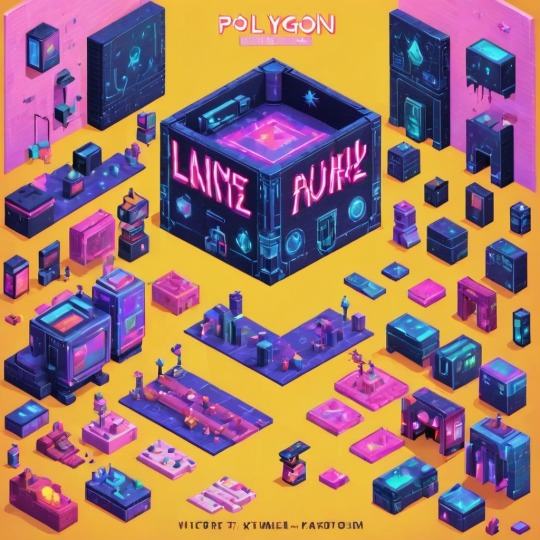
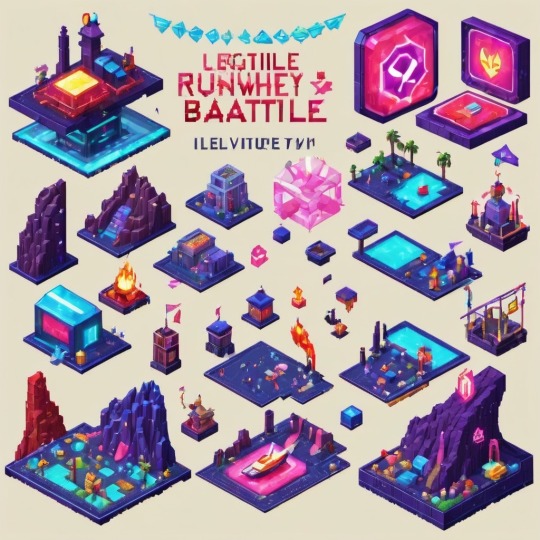
#victoriasecretrunway#runwaybattle#victoria secret fashion#victoria secert model#victoriasecret#victoria secret#VictoriaSecretRunwayBattle#capcom victoriasecret#capcom videogames#playstation7#ps7#deardearestbrands#capcom#digitalconsole#python#script#rawscript#raw code#framework#VictoriaSecretVideoGame#deardearestbrandswordpress
2 notes
·
View notes
Text
Hello Karne;
This blog will exist exclusively to document the development on my game, Karne.
Karne is planned to be a 3D RPG of sorts, grabbing design elements that i personally enjoy in those types of games and combining them in the most solo-dev-friendly way i can.
One important feature i want to personally improve upon is the turn-based combat.
The motto will be "Turn based doesn't have to mean boring or tedious."
If that already sparked your interest, keep reading!
I have already created rough prototypes earlier this year so i am rather confident about the direction i want to go in.
Most of the concepts for locations, characters and the overarching story have already been completed so that type of content may be sparse but i am thinking about sprinkling in some of them from time to time.
Regarding the tools i will be using, they're a mixed bunch of paid and open source softwares.
Godot (specifically the .Net branch) will be my gameengine for this project. Originally i planned to use Unity3D but ... well, you know.
Blender will be used for the creation and composition of 3D assets.
Affinity Designer will be used for most 2D assets, including but not limited to: UI Elements, Sprites, Logos, Rendered World-Space Text (in combination with blender)
Clip Studio Paint will be used for sprite animations and animated "cinematics".
JetBrains Rider will used for all of the programming/scripting work.
And last but not least Reaper will be my digital audio workstation (DAW) of choice.
Did i list all of these just to add the appropriate tags? Absolutely.
But i also think it's important to provide people information that they could use as a starting point to decide on their own product stack for development.
In real life i am a C# developer for a german company but i also have a background in multimedia design and have at least a basic understanding of music theory from playing a few instruments many many years ago. That's the reason i feel confident enough to approach this kind of project. Also, i just always had fun in creating worlds to play in. I think the next logical step is to share these ideas with other people.
3 notes
·
View notes
Text
It is not the engines fault if a game is running poorly
It is not the engines fault, if a game is running poorly Alright. I get it. Many games with UE5 came out and had similar problems. Stop blaming the engine. It is not the fault of the tool and an engine is a tool. If a plumber uses a fancy new tool and fucks up your toilet you don’t blame the tool. The plumber might blame the tool, but we all know its his fault for either using it at all or using it in the wrong way. Same goes for GameEngines. If a game runs badly grill the developer for not optimizing it. Blaming the engine is a cop-out. I know we like the dev teams, especially the scrappy indy devs that produce cool stuff, but if their game stutters it is their fault. They could always use a different engine or even make their own or optimize what they have to make it run smoother. Don’t let the people who make the mistakes off the hook just because they don’t know which tool to use or how to use the one they have. Even the ones you like. Submitted May 31, 2025 at 03:44AM by Chajos https://ift.tt/YD4QtZL via /r/gaming
0 notes
Text
A practice of a #chesterfield #sofa ready for a #gameengine made with #maya #zbrush #3dsmax #substancepainter and #marmoset also I test it on #unrealengine5 ArtStation https://bit.ly/45C2ayf

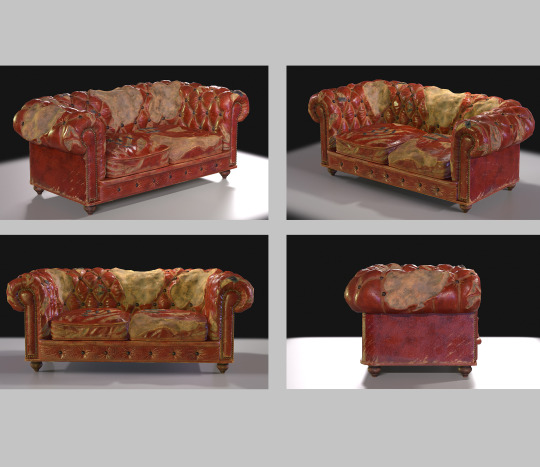








#3d #3dart #3dartist #prop #assets #realistic #cyberpunk #fanart #pbr #damaged #lowpoly #hptolp #environment #gamedev #gameready #gamedevelopment
#3d#3dart#freelancer#prop#3dartist#gameart#lowpoly#gamedev#game design#realism#realistic#cyberpunk#unreal5#unreal engine
0 notes
Text
Experimente mit Screenshots
Grafik im Computerspiel
Mit den Computerspielen "Robocop" und "Titanfall 2" (2/2024) reizte mich das künstlerisch-gestalterische Experiment, Computergame Screenshots nachzubearbeiten. Neben den Games selbst fand ich das Intro zum Kinofilm "The Last Stand" (mit Arnold Schwarzenegger) inspirierend. Fotografien wurden mit Filter- und Vintageeffekten verändert.
In einigen Experimenten insbesondere durch Vektorisierungen und Kollage sind dann z.T. interessante eigene Verarbeitungen erfolgt. Es ist hier zu betonen, dass damit kein kommerzielles Interesse besteht.
Das experimentelle Gestaltungsprinzip habe ich aber in der Folge auf eigene Fotoserien mit eigenen Grafikideen angewendet. Hier sind Artprints möglich, die aber bislang leider noch niemanden zu einem Kauf motiviert hat.

Als Medienwissenschaftler interessiert mich die Entwicklung von Computergames, die ich in einem privaten "Game Screenshot Archiv" sammele. Stand 22/05/2025: ca. 23.266 Screenshot von 1995 bis heute.
Zugleich reizt mich als Grafik Designer freilich auch die gestalterische Seite am Computerspiel. Mit Weiterbildungskursen habe ich mich mit der Unity Gameengine zeitweilig beschäftigt und ein paar interaktive virtuelle Räume gestaltet.
Dr. Andreas U. Korn, 23.5.2025
+ + +
0 notes